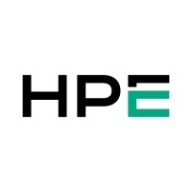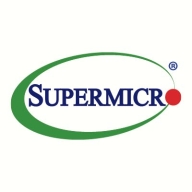

Supermicro SuperBlade and HPE Synergy are competing products in the modular server solutions category. HPE Synergy, with its advanced features and comprehensive infrastructure solutions, appears to have the upper hand for those seeking long-term benefits, despite higher costs.
Features: Supermicro SuperBlade offers high-density compute capabilities, power efficiency, and flexible configurations. HPE Synergy includes a unified architecture, integration of compute, storage, and fabric, and adaptability for diverse workloads.
Room for Improvement: Supermicro SuperBlade needs improvements in ease of deployment, scalability options, and integration capabilities. HPE Synergy could enhance user interface simplicity, reduce initial setup complexities, and improve interoperability with other systems.
Ease of Deployment and Customer Service: HPE Synergy provides streamlined deployment with its composable infrastructure and strong customer service. Supermicro SuperBlade, while challenging to deploy, offers reliable customer support post-deployment.
Pricing and ROI: Supermicro SuperBlade is known for competitive pricing and a quicker ROI for budget-conscious buyers. HPE Synergy has higher upfront costs but promises greater long-term ROI through scalability and enhanced functionality.
| Product | Market Share (%) |
|---|---|
| HPE Synergy | 18.8% |
| Supermicro SuperBlade | 7.6% |
| Other | 73.6% |


| Company Size | Count |
|---|---|
| Small Business | 30 |
| Midsize Enterprise | 15 |
| Large Enterprise | 56 |
HPE Synergy, the first platform built from the ground up for Composable Infrastructure, offers an experience that empowers IT to create and deliver new value instantly and continuously. It is a single infrastructure that reduces operational complexity for traditional workloads and increases operational velocity for the new breed of applications and services. Through a single interface, HPE Synergy composes physical and virtual compute, storage, and fabric pools into any configuration for any application. As an extensible platform, it easily enables a broad range of applications and operational models such as virtualization, hybrid cloud, and DevOps. With HPE Synergy, IT can become not just the internal service provider but the business partner to rapidly launch new applications that become the business.
Supermicro SuperBlade delivers innovative computing performance and efficiency, perfect for data-intensive tasks. With its modular design, it optimizes space and power, providing a flexible and scalable infrastructure for demanding business workloads.
Supermicro SuperBlade is specifically engineered for modern data centers needing high-density computing. It offers a compact, modular architecture that simplifies system management and enhances agility. It integrates seamlessly with cloud and virtualization technologies, supporting diverse applications and workloads. Its design focuses on reducing operational costs while achieving peak performance. Users appreciate its balance of power efficiency and high computing capacity.
What are the key features of Supermicro SuperBlade?Supermicro SuperBlade is widely implemented in sectors such as finance, healthcare, and research where high computational power and storage are critical. In finance, it's used for real-time analytics and transactions. Healthcare facilities use it for patient data analysis and complex simulations, while research institutions leverage SuperBlade for simulations and data-intensive research tasks. Its adaptability allows enterprises to efficiently meet technical requirements unique to each industry.
We monitor all Blade Servers reviews to prevent fraudulent reviews and keep review quality high. We do not post reviews by company employees or direct competitors. We validate each review for authenticity via cross-reference with LinkedIn, and personal follow-up with the reviewer when necessary.